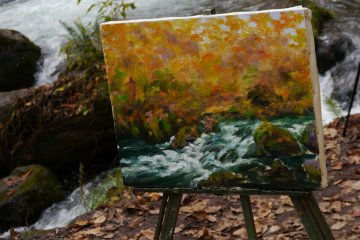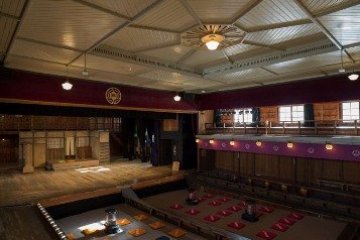In truth there are very few places in Japan that are actually remote, but if there are places that feel remote, they might well be found within the grounds of Towada-Hachimantai National Park that covers two expansive portions of the mountain ranges of northern Tōhoku. It is an experience compounded ten-fold when visited in the colder months, the area boasting the highest snowfall in Japan and carpeting the mountains through the lowlands in pristine powder snow.
In reality you are never all that far from civilisation in the present day, but in its dense forests where the trees stand clad in frost and even waterfalls grind to a halt and become icy spires as the elements win, you catch a glimpse of a landscape that can never be truly tamed. Since antiquity there have been those who made it their home, and in that culture born of adversity there is a genuine warmth, whether figuratively in the hospitality that surrounds so much of the gastronomic culture of the national park, or literally in the proliferation of natural onsen that gives rise to a diverse bathing culture.
The journey to the easternmost area of the park in Iwate prefecture will take you a shade over two hours on the shinkansen from Tokyo, but as you near your destination the fields tangibly clear, and in the winter months are quickly painted white. As you head north into the park you might pass Mount Iwate itself, a gentle shape on arrival from the southeast that recalls Mount Fuji, but when seen from the north is rough rugged volcanic landscape that guides you into the park proper.
Close to Mount Iwate, the farming community town of Shizukuishi’s jukko likewise characterise the area’s culture as one born from adversity but one that comes to have great warmth. Originally making the best of the area’s surprisingly varied mix of local produce by each farmer bringing their own respective produce to a banquet so that everyone could enjoy a variety of dishes, now a communal meal like no other with each boxed dish passed around in rotation so that everyone is connected by both food and good cheer.
To get a taste of how those that came before you once navigated the area, it is well worth paying homage to the local equine customs that centre in the pastures around Takizawa City. Here horses were a practical necessity, but also a source of culture as epitomised by the Chagu Chagu Umakko Festival that encapsulates the rustic but spirited character of the area. Held every June, the festivities see some 100 horses in procession draped in bright Japanese textiles and clad in bells that were traditionally used to ward off wolves. This vibrant culture can be seen anytime of the year at local stables, and to complete the experience horse riding amongst the spectacular scenery of Towada-Hachimantai National Park is available in all seasons.
Now, you are surely anxious to head out into the nature that envelops you. One of the park’s namesakes, Mount Hachimantai, is accessible by car or bus via vast corridors of snow that remain well into spring. Boasting numerous trekking and snowshoe walking courses run from the local Hachimantai Visitor Centre you can take command of routes through close-set trees intersected by partially frozen rivers, with the snow only losing out to the heat from onsen springs that punctuate the volcanic hills.
For an experience that encapsulates the thrill of conquering nature an early morning snowshoe hike as the sun rises over the sparkling hills of Hachimantai is an unforgettable way to start the day, especially if you are still warm from having spent the night at one of the area’s many onsen resorts renowned for their recuperating waters. Among the morning stillness you might be lucky enough to spot rabbits, squirrels and even the Japanese serow, or at least the abundance of their tracks as you marvel at how much wildlife the snowy plains are home to.
While you are still in Akita don’t miss out on the tanpo that the area is famous for. The simple dish can be made by yourself by shaping freshly pounded and mashed rice on to cedar skewers and then cooked over an open hearth. The dish comes alive when coated with sweet miso then seared, and once more the communal act of cooking it is the real treasure and embodies the importance of cuisine to the community in the Tohoku area at large.
Your path from Hachimantai to the northern area of the park, Towada-Hakkoda, takes you up through Akita prefecture and through Kosaka, an area vital to the transformation of the area from pre-modern rural agriculture, through to the industrial revolution of the turn of the century Meiji era. What was once an important mine in that period has now been turned into a metal recycling facility inline with contemporary Japanese attitudes striving for ecology, and the history of the area is still very much tangible in Kosaka town with the local playhouse that entertained the many workers of the mine still very much active, and the magnificent Kosaka Mine Office now open to the public. Both offer a different perspective of the history and culture of the national park, and amidst the imposing mountains the presence of the quintessentially Japanese kabuki playhouse contrasting with the western form of the office is an era of Japanese history that must be experienced to be understood.
Your next destination ought to be Lake Towada itself, a vista of unparalleled natural beauty whether seen from its banks or the viewing points that extend from Towada Shrine, itself a stunning sight no-matter the season. Formed as a vast caldera lake 150,000–200,000 years ago, the forms of the lake and the many curiosities of its banks are the stuff of local legend, and especially in winter the icy calm invites an air of spirituality that makes it all the obvious why traditional Japanese religious practice derived from the worship of nature.
Finally, those seeking refuge from the elements should head north to the mountain ranges of Mount Hakkoda deep in Aomori prefecture. There amidst the snowy hills many famous onsen await including Sukayu Onsen and Tsuta Onsen that offer a great base for hiking, nature trails, as well as skiing. The respective onsen offer a vision of how hot springs were in many ways the original resort experience in Japan, with some customers staying weeks to recover from an ailment, and with Sukayu Onsen offering mixed bathing, a more family orientated onsen experience.
In the contrast between the chill of the climate and the warmth of the local hospitality and vibrant culture, the adversity of nature and exhilaration of overcoming it, we find Towada-Hachimantai National Park. An encounter with a sense of wilderness, but always with a hot spring bath close at hand, the northernmost reaches of Tohoku are an indispensable part of understanding Japanese nature and the culture it continues to bear.
Aomori Prefecture Tourist Information Center Tel: 017-734-2500 https://www.en-aomori.com/
Iwate Tourism Association Tel: 019-651-0626 https://iwatetabi.jp/
Akita Tourism Support Center Tel: 018-838-0225 (English) https://akita-fun.jp/
Towada-Hachimantai National Park visited in January


















